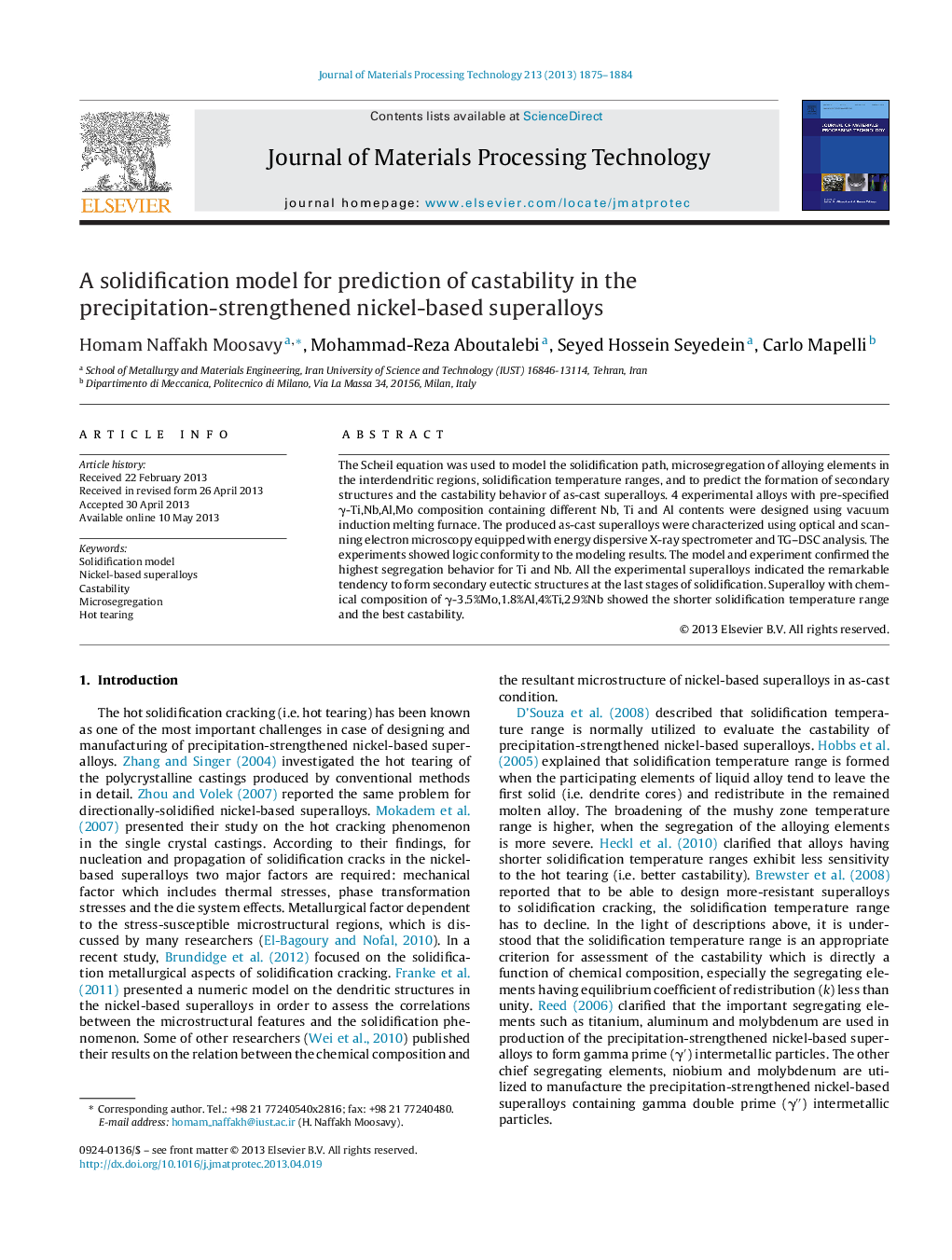| Article ID | Journal | Published Year | Pages | File Type |
|---|---|---|---|---|
| 793110 | Journal of Materials Processing Technology | 2013 | 10 Pages |
•An analytical castability model for the Nickel-based Superalloys is developed.•The model predicts the segregation, temperature ranges and phase formation.•The model presents composition of segregation in terminal liquid.•Alloy with composition of γ-3.5%Mo,1.8%Al,4%Ti,2.9%Nb showed the best castability.
The Scheil equation was used to model the solidification path, microsegregation of alloying elements in the interdendritic regions, solidification temperature ranges, and to predict the formation of secondary structures and the castability behavior of as-cast superalloys. 4 experimental alloys with pre-specified γ-Ti,Nb,Al,Mo composition containing different Nb, Ti and Al contents were designed using vacuum induction melting furnace. The produced as-cast superalloys were characterized using optical and scanning electron microscopy equipped with energy dispersive X-ray spectrometer and TG–DSC analysis. The experiments showed logic conformity to the modeling results. The model and experiment confirmed the highest segregation behavior for Ti and Nb. All the experimental superalloys indicated the remarkable tendency to form secondary eutectic structures at the last stages of solidification. Superalloy with chemical composition of γ-3.5%Mo,1.8%Al,4%Ti,2.9%Nb showed the shorter solidification temperature range and the best castability.
